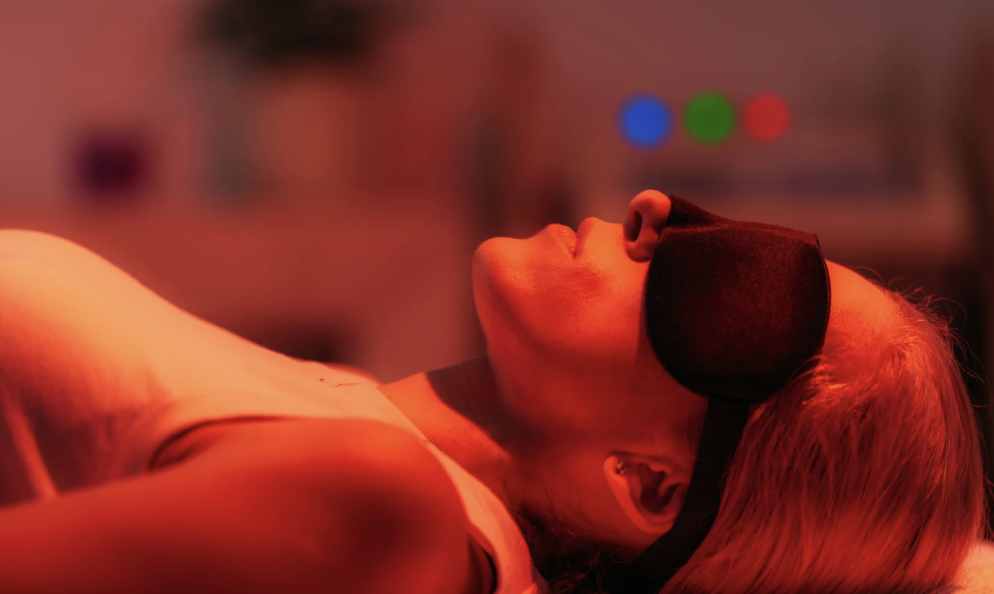At Whole Body & Sole, we believe healing happens on many levels. Red light therapy (also called photobiomodulation) has become one of our favorite ways to support and amplify a massage session—without taking any time away from your hands‑on work.
Here’s what red and near‑infrared light offer your body, and why we integrate them into longer massage sessions (90 or 120 minutes) for a more supportive, restorative experience.
What Is Red Light Therapy?
Red light therapy uses specific wavelengths of red and near‑infrared light delivered via LEDs (or low‑level lasers) to gently interact with your cells and tissues.
Because it’s non‑invasive (no heat, no chemicals), it’s considered safe when used properly.
In research, this kind of light is often referred to as “low-level light therapy,” “photobiomodulation,” or “LED therapy.”
🌈 More Than Just Red Light: Why Wavelength Variety Matters
At Whole Body & Sole, we use AO Light devices by Solex that go beyond traditional red light therapy by incorporating multiple wavelengths, including red, blue, and green light. Each type of light interacts with the body differently, offering a wider spectrum of supportive wellness benefits.
Here’s a look at what each wavelength may support:
🔴 Red Light (around 635 nm)
Commonly used to support circulation and natural tissue recovery
May promote collagen integrity and cellular energy (ATP)
Often applied to areas of tension or muscle fatigue during massage
🔵 Blue Light (around 450 nm)
Used to support a calming effect on the skin’s surface
May assist in soothing areas that are irritated or sensitive
🟢 Green Light (around 520 nm)
Known for its balancing and harmonizing effect on the nervous system
Often used to help the body regulate perceived discomfort
May support emotional grounding and energetic balance
- Supportive in migraine prevention and reducing pain
By using devices that combine multiple light types, your body receives a more comprehensive range of light frequencies, each chosen to gently support your natural processes—from skin vitality and tissue comfort to nervous system balance.
Whether it’s layered into your massage session or used as a standalone add-on, this multi-wavelength approach allows us to offer customized, full-spectrum light care for whole-body support.
Here are some of the ways red light therapy may support the body—especially when paired with bodywork:
| Possible Benefit | How It Helps in a Massage Session | Supporting Evidence |
|---|---|---|
| Reduced inflammation / pain modulation | The light’s interaction with cells may help reduce local irritation so your tissues release more easily during massage. | Photobiomodulation has been shown to reduce pain intensity in musculoskeletal conditions. PMC Near-infrared light shows anti-inflammatory effects at the cellular level. ScienceDirect |
| Tissue repair & collagen support | By stimulating mitochondrial activity, red/NIR light may encourage cell health and tissue resilience—potentially supporting deeper healing from massage. | A controlled trial showed improvement in skin roughness and collagen density after repeated red + near‑infrared sessions. PMC LED red and infrared light increased expression of collagen‑related genes in skin cell studies. JAAD |
| Enhanced circulation / microvascular support | Better blood flow helps bring nutrients & oxygen to tissues and assists with removal of metabolic waste—supporting what your massage is already stimulating. | Infrared therapy has been found to influence circulation and penetrate deeper soft tissues. News-Medical+1 |
| Support for nerve and soft tissue balance | For clients with nerve sensitivity, overuse, or tension, certain wavelengths (like red at ~660 nm) may help modulate signals in peripheral nerves. | Studies show red light (660 nm) has been used experimentally in neuropathy and complex regional pain syndrome. PMC+1 Emerging research is exploring near‑infrared light for nerve injury recovery. ScienceDirect |
| Skin health & appearance | This is a bonus—if you’re also concerned with glow, tone, or skin texture, the wavelengths we use may support skin vitality in treated areas. | Clinical trials show that red + NIR improved skin complexion, texture, and wrinkle metrics over time vs controls. PMC+2PubMed+2 |
Why We Integrate It Into 90/120‑Minute Massages
Seamless Integration: The red light runs during your massage rather than before or after, so it doesn’t steal any of your hands‑on time.
Timely Support: Longer sessions give enough time for both massage and photobiomodulation to work synergistically.
Layered Effect: As your therapist helps the musculature release, the red light is working at the cellular level to support recovery, circulation, and cellular resilience.
Relaxation + Regulation: The experience tends to deepen parasympathetic (rest/digest) responses, aiding your body’s natural ability to unwind.
How to Get the Most from Your Sessions
Book 90- or 120-minute massages if you can—it gives the red light enough time to integrate meaningfully in several areas of your body.
Stay hydrated: Water with electrolytes supports cellular processes.
Be consistent: Multiple sessions can compound the benefit.
Be patient: Light therapy isn’t always instantaneous—it often builds over sessions.
Red light therapy is an exciting complementary tool—especially when paired with skilled massage—but it’s not a cure-all. Its strongest role is supportive—helping your body rest, respond, and regulate more effectively.
If you have any medical conditions (photosensitivity, active cancers, skin disorders), always check with your physician before using light therapy.
Book Your Red Light Therapy Session Here.




